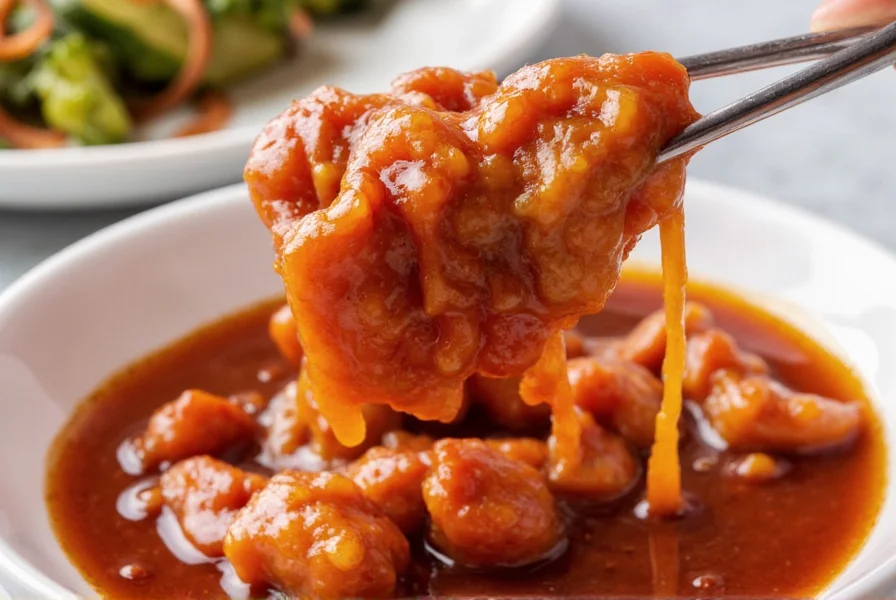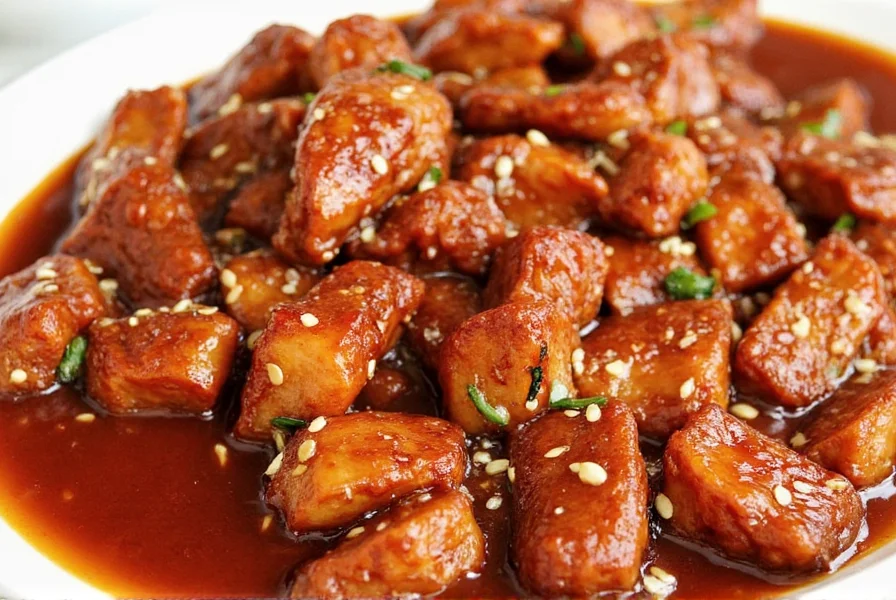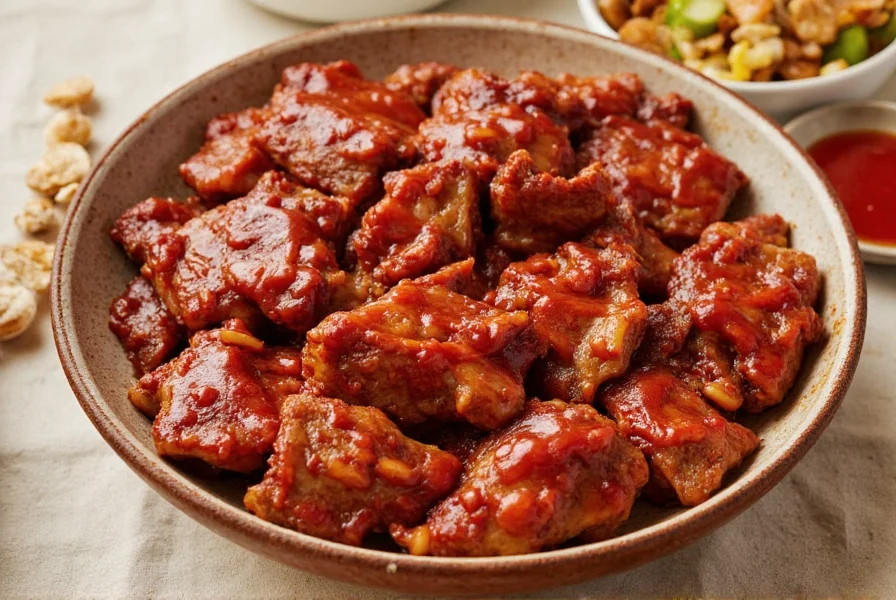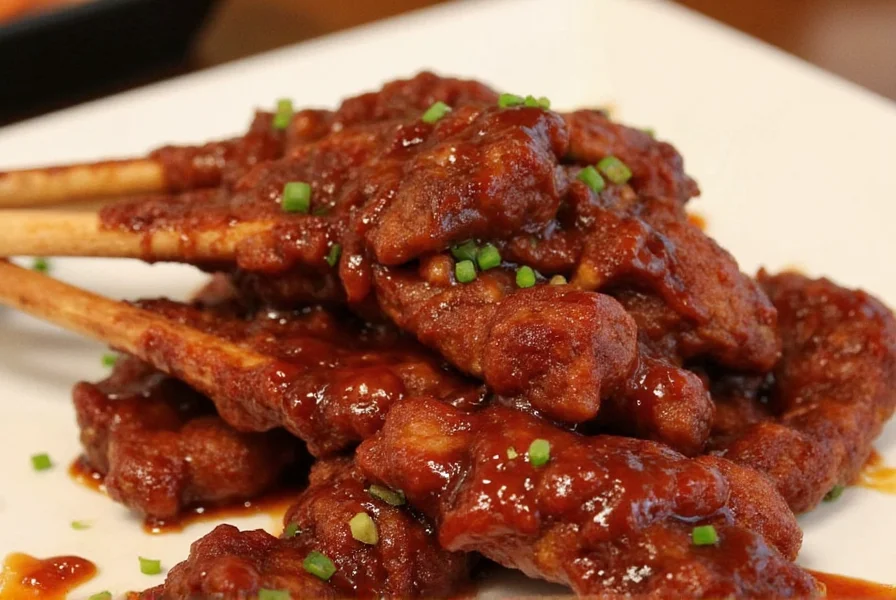Learn how to make authentic Korean BBQ sauce at home with this simple recipe. Perfect for grilling, marinades, or stir-fries, this easy-to-follow guide includes all the ingredients and steps you need for perfect flavor every time.
Ingredients
- Gochujang: Fermented red chili paste (the heart of the sauce)
- Gochugaru: Korean red pepper flakes (for heat and color)
- Soy Sauce: Adds saltiness and umami
- Brown Sugar / Honey: For sweetness and caramelization
- Sesame Oil: Adds richness and nutty aroma
- Garlic: Freshly minced or paste
- Ginger: Adds brightness and warmth
- Rice Wine / Mirin: For a touch of acidity and shine
Step-by-Step Instructions

- Gather Ingredients: Ensure everything is fresh and well-stored.
- Combine Base Flavors: In a bowl, mix 3 tbsp gochujang, 1 tbsp gochugaru, 2 tbsp soy sauce, 2 tbsp honey or brown sugar.
- Add Aromatics: Stir in 1 clove minced garlic, ½ tsp grated ginger, and 1 tsp rice wine or mirin.
- Adjust Heat & Sweetness: Taste and tweak! Add more gochugaru for heat, or honey for sweetness.
- Incorporate Sesame Oil: Just before serving, stir in 1 tsp sesame oil to enhance aroma.
- Let It Rest: Allow the sauce to sit for 1–2 hours so flavors meld together.
| Ingredient | Flavor Profile | Alternative (if unavailable) | Storage Tip |
|---|---|---|---|
| Gochujang | Umami, spicy, slightly sweet | Miso + chili paste combo | Refrigerate after opening |
| Gochugaru | Earthy heat, vibrant red | Cayenne or crushed red pepper | Airtight container, cool place |
| Soy Sauce | Salty, savory | Tamari (gluten-free option) | Store away from sunlight |
| Honey | Sweet, sticky | Maple syrup or brown sugar | Sealed jar, room temp |
| Sesame Oil | Nutty, aromatic | Olive oil (not recommended) | Dark bottle, fridge if hot climate |
Spice Storage & Usage Hacks for Maximum Flavor

Even the best recipe won't save your dish if your spices are past their prime. Here's how to keep those flavors sharp and punchy:
1. Buy Whole Spices When Possible
Whole spices like peppercorns or cumin seeds retain their potency longer than ground versions. Grind them yourself using a mortar and pestle or spice grinder right before use for maximum flavor impact.
2. Store Spices in Airtight Containers
Light, air, and moisture are your spices' worst enemies. Use glass jars with tight-fitting lids and store them in a dark, dry cabinet.
3. Keep Chilies Cool and Dry
Gochugaru and other dried chilies degrade quickly when exposed to heat. Store them in a ziplock bag inside a sealed container in a cool pantry or even the freezer for extended freshness.
4. Label Everything
Label your homemade spice mixes and sauces with dates. This helps track freshness and avoid confusion, especially if you're storing multiple variations.
5. Batch It Up & Freeze
Make a double or triple batch of your Korean BBQ sauce and freeze in ice cube trays or small containers. Thaw only what you need later—it's a flavor-saving hack for busy days.
Buying Guide: Choosing the Best Ingredients
If you're new to Korean cooking, here's a quick guide to finding quality ingredients:
Top Picks for Gochujang
- Samyang Gochujang: Rich, fermented flavor perfect for beginners
- Sajo Gochujang: Slightly sweeter and smoother
- Jongga Premium Gochujang: Ideal for advanced users looking for depth
Best Gochugaru Brands
- Chung Jung One Coarse Gochugaru: Great for texture and heat
- Daewon Food Fine Gochugaru: Milder, good for blending
- Hansik Gochugaru: Balanced heat and color
Recommended Soy Sauces
- Kikkoman Naturally Brewed: Reliable all-purpose soy sauce
- Yamasa Organic: Great for clean eaters
- San-J Tamari: Gluten-free alternative
Where to Buy
- Local Asian Grocery Stores: Often cheaper and fresher
- Amazon: Wide selection and fast delivery
- Specialty Online Shops: Like Kim'C Market or Orenji Foods
| Product | Flavor | Price Range | Best For | Occasion |
|---|---|---|---|---|
| Samyang Gochujang | Robust, balanced | $9–$12 | Beginners & general use | Weeknight meals |
| Chung Jung One Gochugaru | Smoky, earthy heat | $7–$10 | Kimchi & marinades | Big batches & parties |
| Kikkoman Soy Sauce | Clean, salty umami | $6–$8 | All-purpose | Daily cooking |
| San-J Tamari | Mellow, gluten-free | $8–$11 | Gluten-sensitive cooks | Dipping sauces |
Serving Ideas & Creative Uses for Your DIY Korean BBQ Sauce

Don't limit yourself to dipping bowls! Try these creative ways to use your homemade Korean BBQ sauce:
- As a Marinade: Toss chicken, beef, or tofu in the sauce and grill or pan-sear.
- Stir-Fry Glaze: Add toward the end of cooking vegetables or noodles for a glossy finish.
- Pizza Drizzle: Yes, really! Use it as a base or finishing sauce for Korean-inspired pizza.
- Burgers & Sandwiches: Slather on grilled patties or wraps for an umami kick.
- Salad Dressing: Mix with a bit of olive oil and rice vinegar for a spicy Asian vinaigrette.
- Egg Dishes: Spoon over fried eggs or add to shakshuka for an unexpected twist.
Frequently Asked Questions
Can I Make Korean BBQ Sauce Without Gochujang?
You can try substituting with miso and chili paste, but it won't be authentic. If you absolutely can't find gochujang, consider ordering online or checking international markets.
How Long Does Homemade Korean BBQ Sauce Last?
Stored in an airtight container in the fridge, it should last 2-3 weeks. You can also freeze it for up to 3 months.
Is Korean BBQ Sauce Gluten-Free?
Not always. Regular soy sauce contains wheat. For a gluten-free version, substitute with tamari.
How Can I Adjust the Spice Level?
Control the heat by adjusting the amount of gochugaru. Start with 1 tablespoon and add more gradually until desired heat level is achieved.
What's the difference between Korean BBQ sauce and regular American BBQ sauce?
Unlike American-style barbecue sauces that lean heavily on tomato bases and molasses, Korean BBQ sauce is more complex. It blends sweetness from brown sugar or honey, spiciness from gochujang and gochugaru, umami from soy sauce and sesame oil, and often a touch of garlic and ginger.
Why is my homemade Korean BBQ sauce too thin? How can I thicken it?
If your sauce is too thin, try simmering it gently for 5-10 minutes to reduce and concentrate the flavors. You can also mix 1 teaspoon of cornstarch with 1 tablespoon of cold water and whisk it into the sauce, cooking until it thickens.
Can I make this sauce less sweet?
Absolutely! Simply reduce the amount of honey or brown sugar. Start with half the recommended amount and adjust to your preference. You can also balance sweetness with a splash of rice vinegar or a bit more soy sauce.
What's the best way to use Korean BBQ sauce as a marinade?
For best results, marinate meats for at least 30 minutes (or up to 24 hours for tougher cuts). The sugar content means it can burn easily, so watch the heat when grilling and consider applying additional sauce during the last few minutes of cooking.











 浙公网安备
33010002000092号
浙公网安备
33010002000092号 浙B2-20120091-4
浙B2-20120091-4